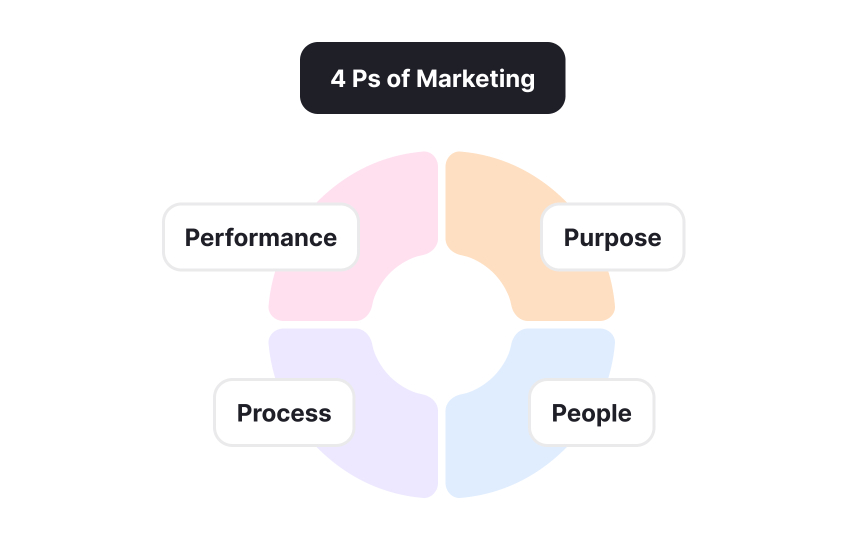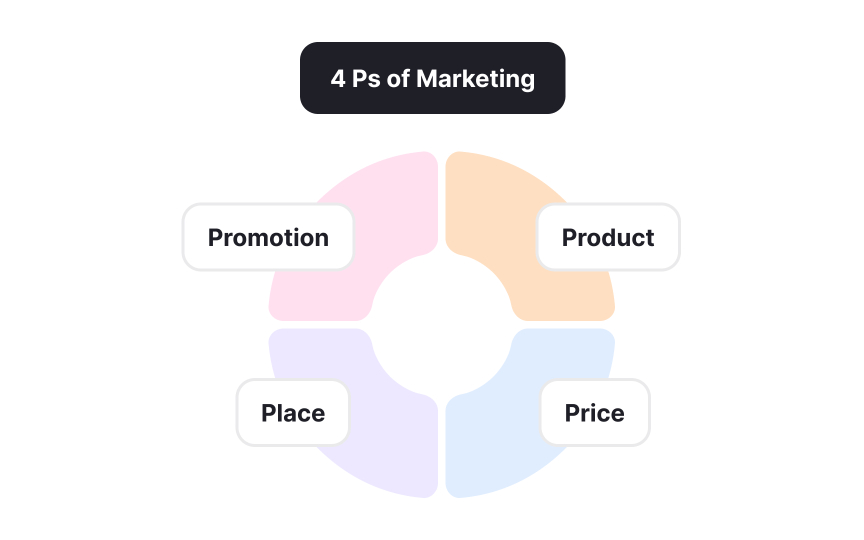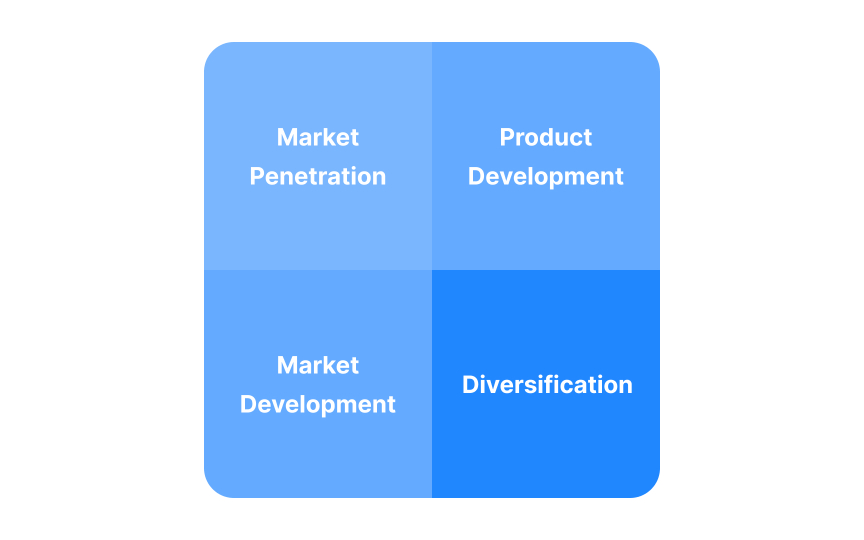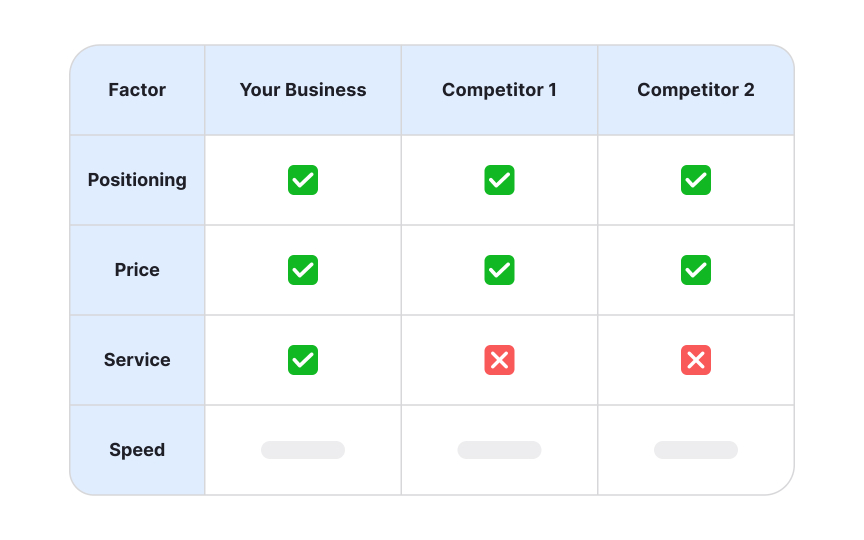Marketing Strategy
Design a marketing strategy that connects your product to the right market with measurable impact.
Many underestimate the role of marketing, treating it as decoration added after the product is built. Yet even the best product remains invisible without a way to reach people. Marketing is the tool that makes ideas visible, helping customers understand why a product exists and how it improves their lives.
A marketing strategy provides the structure for this process. It is not just a collection of ads but a long-term vision that defines how a product will be positioned, who it is for, and how it communicates value. Without it, efforts remain scattered and disconnected from the bigger picture.
This lesson explains how strategy differs from planning, why a clear value proposition is essential, and how growth frameworks such as Ansoff’s matrix or the four Ps support decision-making. It also shows how competitive analysis reveals opportunities and how measurable success metrics ensure that strategy leads to real outcomes.
With a strategy in place, marketing becomes a compass that aligns product, audience, and business goals into a lasting impact.
A
A marketing plan, on the other hand, explains how to get there. It details campaigns, budgets, schedules, and the practical steps to move strategy into action. When the two are confused, teams may end up with busy calendars that do not contribute to lasting growth.
To use both effectively, start by preparing a concise strategic outline that highlights your target market, the product’s promise, and measurable objectives. Then develop quarterly or monthly plans that choose channels and activities aligned with that vision. Strategies provide consistency while plans allow for adaptation. Keeping this balance ensures that daily marketing tasks are not random actions but deliberate moves tied to long-term direction.
Pro Tip: Ask “Does this task serve our strategy?” before adding it to any plan.
A
Campaigns that ignore the value proposition often appear scattered or generic. By checking messages, visuals, and tone against the proposition, marketing remains coherent and clear. For instance, social posts might highlight speed, while case studies focus on trust. Different expressions are useful, but all must link back to the same promise. When the value proposition is consistently applied, users begin to recognize the brand and connect it with specific benefits, which strengthens the market position.[1]
The 4 Ps — product, price, place, and promotion — form a framework that connects
- Product covers the design and features that solve user needs.
- Price reflects how value is captured and signals positioning in the market.
- Place identifies where and how the product is available, whether in stores, online, or through partners.
- Promotion defines the communication methods used to reach the audience.
Looking at all 4 together ensures marketing actions are balanced. Focusing too much on one P, such as promotion, without aligning the others often leads to gaps between expectations and experience.
Marketers use the 4 Ps to test whether a strategy is actionable. For example, a premium positioning requires a product with standout features, pricing that communicates exclusivity, selective distribution, and promotion that emphasizes quality. Adjusting one element without the others creates contradictions. Keeping the 4 Ps in view helps maintain internal consistency and prevents fragmented activities.
Ansoff’s matrix highlights four strategic growth options:
- Market penetration deepens reach in existing markets with existing products, often through
pricing or promotion. - Market development introduces current products to new segments or regions.
- Product development adds new features or entirely new products for current users.
- Diversification combines new products and new markets, offering higher risk but also potential for breakthrough gains.
Each path has different resource needs and levels of uncertainty.
This framework helps
Pro Tip: Use Ansoff’s matrix to check if your growth idea matches available resources.
Real examples show how strategy shapes everyday
Trader Joe’s, a U.S. grocery chain, offers a different but equally clear case. Its stores focus on private-label products, affordable
By studying such cases, it becomes easier to see how strategy provides the filter for product design, communication, and customer experience, ensuring that every action points to the same long-term vision.
Pro Tip: Identify how one brand you know reinforces the same promise in its products, messages, and user experience.
Once competitors’ features,
In marketing, competitive analysis means more than comparing products. It shows where opportunities exist in communication, promotion, and customer engagement. For example, if competitors rely on discounts to attract buyers, a
Keeping a regular eye on competitors ensures that marketing stays relevant as the market changes. It helps teams avoid copying others and instead build a clear, unique position that connects with their audience. When used this way, competitive analysis becomes a guide for campaign focus, tone, and resource planning, leading to more effective and measurable growth.[5]
Pro Tip: Review competitor campaigns regularly to track changes that may impact your positioning.
A successful
It is important to remember that this is an ongoing responsibility. Target audiences evolve over time as behaviors, preferences, and market conditions change. What resonates today may lose relevance tomorrow, so strategies must adapt accordingly.
Practical alignment means checking that audience insights are visible in product features, pricing, and communication. A mismatch often signals a weak strategy. For instance, promoting a premium service while using discount-heavy ads can confuse customers about its true value. Teams should document audience profiles and keep them visible when setting goals and designing campaigns. This ensures that the audience is not only identified but also actively drives strategic choices.
Pro Tip: When reviewing a campaign, ask if it speaks directly to the intended audience segment.
Metrics vary with the goal behind a
Consider Spotify as an example. In its early years, growth was the main priority, so metrics like user acquisition and app downloads mattered most. As the platform matured, retention became central, making churn rate, hours streamed, and customer lifetime value more important to track. More recently, with podcasts as a strategic bet, engagement metrics such as completion rates and time spent per session became key. This shift shows how strategy determines what is worth measuring.
Pro Tip: Choose metrics that change when your specific goal changes, not just numbers that are easy to collect.
Teams can strengthen this connection by taking a business objective and mapping it to marketing goals. For instance, if the business seeks recurring revenue growth, marketing might focus on reducing
A
Ownership is crucial for turning these initiatives into progress. Each priority should have one accountable owner who coordinates tasks across functions. Supporting roles can then be assigned to marketing, design, or sales members depending on what is required. Tools like a responsibility assignment matrix or OKRs can help clarify who leads, who supports, and who monitors results. This prevents confusion and ensures every part of the strategy is someone’s responsibility, not just words in a slide deck.
Pro Tip: Assign one clear owner to each initiative and review their progress regularly.
References
- Trader Joe's Marketing Strategy: Analyzing the Success | ContactPigeon | Omnichannel Customer Engagement Platform
- Competitive analysis in the context of marketing | easyfeedback: modern online surveys, questionnaires, quiz and more
Topics
From Course
Share
Similar lessons

Building Loyalty Programs to Retain Users

Building Community and Leveraging Social Proof
























